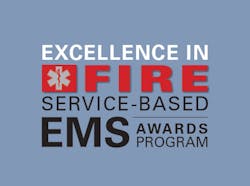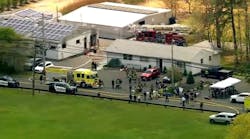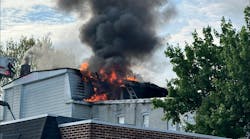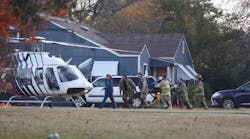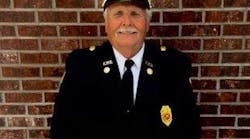WASHINGTON, D.C. -- Three fire-based EMS departments received the Excellence in Fire Service-Based EMS Award by the Congressional Fire Services Institute (CFSI) and MedicAlert Foundation at the 24th Annual National Fire and Emergency Services Dinner.
The honors went to a career, a volunteer and a combination department. It marked the second year that EMS has been recognized, and more than 1,600 fire and emergency services personnel applauded the recipients.
“Our services, like those of the fire departments we are honoring with Excellence Awards, have evolved significantly over the last 50 years to include innovative new technology and e-health information exchange,” said Mary Dean, chair of the MedicAlert Foundation Board of Trustees.
Dean said her agency is similar to those of responders—to help people when they need it the most.
She added that there were a number of exemplary nominations, which made choosing three difficult.
The three departments included the Mesa Fire and Medical Department; the Selden, NY Fire Department; and Center Point, Ala. Fire District. As officials from each department stood center stage, Dean read a synopsis that led judges to select them.
Center Point Fire District
Providers in this Alabama area have made a difference, especially in the number of cardiac arrest survivors. The agency participates in the Resuscitation Outcomes Consortium (ROC), a 10-city, NIH-funded network that is defining state-of-the-art EMS by conducting clinical trials of out-of-hospital cardiac arrest and major trauma. The department holds the distinction of participating in the ROC program for the past seven years, a testament to its high standard of performance and commitment to state-of-the-art emergency care.
One compelling statistic stands out: In 2007, the cardiac arrest survival rate in Center Point was 2.7 percent. In 2011, that rate increased to 10.5 percent.
Center Point also has a partnership with the University of Alabama Birmingham Medical School in a “Ride Along” program. UAB medical students perform rotations on ALS transports units where they gain valuable knowledge in prehospital emergency care.
Mesa Fire and Medical Department
In 2006, they had 10 engine companies each responding to over 3,000 calls, with one company responding to 4,000 calls. Due to their high call volume, these units were unable to respond to calls in their areas 25% of the time, with those calls being handled by the next closest units, thereby extending response times. Of the 55,000 calls in 2006, 76% were medical in nature.
To address this challenge, they developed a plan to dispatch a two-person Transitional Response Vehicle (T-R-V) in peak times to respond to low level emergency medical calls. Working in concert with the leadership of the Mesa firefighter’s union, city management and the city Council, the first T-R-V was dispatched to calls staffed with a paramedic and an EMT.
Mesa has seen an 11 percent increase in availability for response from the Advanced Life Support paramedic unit stationed with a T-R-V, and the response times for the ALS unit improved.
Due to the success of the initial unit, the department now deploys three T-R-Vs. They haven’t stopped there, either. They are now carefully piloting treat and release protocols, as well as the transportation of patients to facilities other than hospital emergency rooms when appropriate. This effort is intended to help reduce overcrowding in the emergency rooms, reduce overall medical costs and reduce other expenses associated with transport of non-insured patients.
Selden Fire Department
The department has undertaken a number of key initiatives to advance their EMS response and to minimize reliance on mutual aid. The innovations that they instituted include assigning all members to shifts on the ambulance squad. This has been a resounding success, and they have covered 100 percent of calls without calling for mutual aid.
Recognizing that the town has a growing aging population that requires frequent ALS intervention, they added new volunteer paramedics and EMT CCs and developed a funding strategy for ensuring members receive the highest level of training in critical care. In addition to the training, the department outfitted eight ALS volunteer responders with cardiac monitors, drug bags, EMS supplies and radios and positioned them around town to shorten response times.
To learn more about CFSI.
